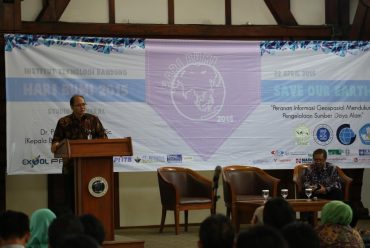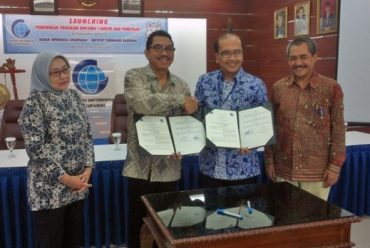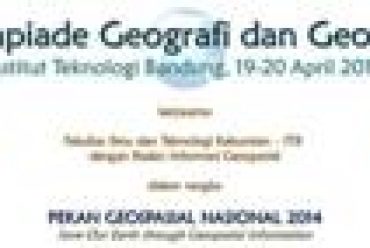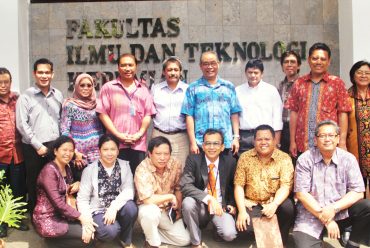Intelligent Community Disaster
Bandung, fitb.itb.ac.id rainy season with high rainfall coming every year. On the one hand we are grateful for the blessings that God has given to the Earth. However, on the other hand we will be faced with a series of catastrophes. Floods, flash floods, and landslides are natural events that always accompany precipitation simultaneously.
Regular flooding in the western region of Indonesia, especially Bandung south, almost over in February 2010; as well as a massive landslide in Tenjolaya, Ciwidey, February 23, 2007, and in Sukanagara, Cianjur, March 10, 2010; perhaps change the perception of the community as a carrier of rain in the disaster, instead of a blessing carrier.
In every disaster was as if our society has always been “cheated”. In turn, pointing blame-pointing among the maze of relief efforts for the victims.
Naturally, when allegations of error was first directed at the government. However, the role of government in regulating a very large area. The second accusation is also reasonable if directed to experts in the community itself was eventually deemed unable to do anything and the problem becomes more difficult.
However, so far the government and the experts actually not silent anyway. Disaster mitigation efforts, namely how to reduce disaster risk, have been carried out. The question is, why the effort was as if they were stopped as a discourse or research report?
Hazard map
Most likely the answer is like a movie title, lost in translation. There is a gap between academic language experts and language of government bureaucrats, all the more understandable language community. Sturdy bridge must be built to cope with the knowledge that gaping chasm in this.
One of them is a hazard map. The map for some areas has been made. Map prone to landslides has long been disseminated to the area of West Java and Banten. However, the map was a very small scale. One point on the map could represent a vast district.
However, a more detailed map making clear need not cost a bit. In addition, the knowledge and understanding of map reading may not necessarily be controlled at the level of rural communities. Bridge to overcome the chasm that must be built not only on the government side with the experts, but should fully involve the community. In Japan, a few years ago, I was blown away by the people of a village that makes its own village map complete with locations of cracks and areas prone to landslides. The map that looks simple be hold responsible catastrophic problem in the village is constantly updating at any time.
Awareness was formed because they feel they have shared knowledge of their village which represented a piece of a map with information that can be understood. They do not get lost in technical terms because it has been translated into geological understanding of the villagers themselves. Copies of the maps they create big signpost installed in the village that can be read by anyone. Those who are involved in the making of the map-even if his name is not listed-proud and beaming explain how they made the map. Our society should also be made. Stay a little direction and principles of scale and orientation of the map, a map of the village will be easily made. Capital is only the measuring rope, compass, paper and stationeries. All community members to be involved, especially the students of junior high to the top, especially active in scouting. This activity will be very useful and productive for their own villages. Down to the village
This is where the role of government and experts to go down to the villages contribute to the dissemination and sharing of knowledge about map-making village and what should be included on the map. When the provincial or district governments are too busy with various affairs, while making maps of disaster-prone areas is too expensive, which is most appropriate to do is educate people to self-create a hazard map itself.
The government could also take advantage of community work program to mobilize university students, particularly from courses geology, geodesy, and geography, to produce hazard maps that can read its own citizens. It is time intelligently empowered society in understanding the physical characteristics of each village area, including the level of vulnerability to disasters in the village.
On the other hand very good programs, such as the group of radio listeners, readers and television viewers (Kelompencapir) who once built the New Order regime, which then helped displaced and disappeared along with the resignation of President Soeharto, need to be reshaped. Such programs are very useful, because in addition to being a bridge between the government and the public, will also lead to knowledge that was established by interactive community.
The empowerment of women is at the core of similar programs that will participate wake up and become the backbone remarkable for empowerment and intellectual level of the rural community as a whole.
Making a map of the village with a more legible scale and how to share knowledge through Kelompencapir similar programs first, especially in recognizing the country against disaster vulnerability, God willing, will significantly reduce the risk of disaster if a disaster struck our countryside. Perception of rain as a blessing carrier will remain embedded in the community, while the condition of cracks in the ground in the village just a warning that residents remain aware and vigilant, not bearer disaster.
In the future “cheated” catastrophic hopefully not happen again because the public has to understand the physical characteristics of the village, strong, and ready to face natural event could not have removed it.
BUDI Brahmantyo Bandung Basin Research Group Coordinator
Source (Kompas Newspaper Column Issue Forum Monday, April 5, 2010)







No Comments